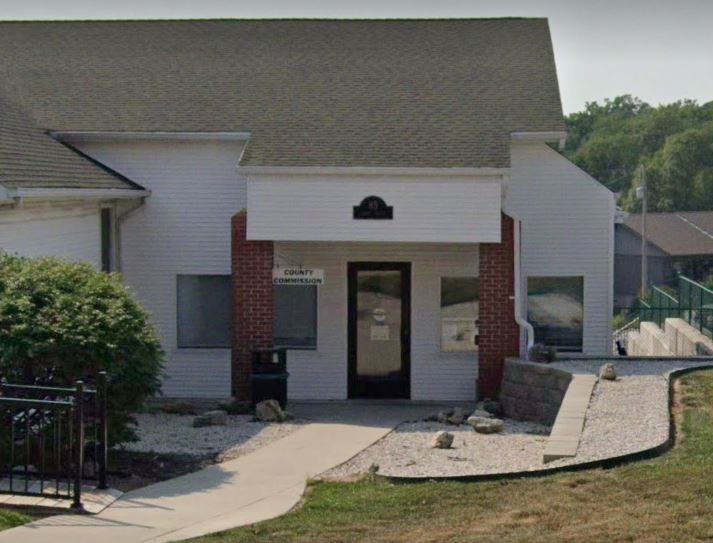Severe Weather Preparedness Week Taking Place March 6th-10th
Mother Nature gets a jump on Severe Weather Preparedness Week with Monday’s early morning onslaught that brought with it a couple of tornado warnings, 60-plus mile per hour winds and several other warnings in the lake area.
The National Weather Service is teaming up with SEMA and local emergency managers to observe the week which is set for all next week.
The annual statewide tornado drill will also be part of the week next Tuesday, March 7th, barring any severe weather on that day.
Schools, businesses and families are all encouraged to participate in the week which will feature different safety messages for each day.
****More info:
Missouri to observe Severe Weather Preparedness Week March 6 – 10
Missourians reminded to prepare for severe weather and participate in statewide tornado drill on March 7
JEFFERSON CITY, Mo. – In July 2022, severe storms and record rainfall across the St. Louis region devastated families, homes and businesses, many in areas that had never experienced such flooding before. This historic disaster serves as yet another reminder that severe weather can strike at any time, anywhere.
“Flooding – particularly flash flooding – is the deadliest severe weather hazard in Missouri and can happen year-round,” State Emergency Management Agency Director Jim Remillard said. “Tornadoes and severe storms also pose deadly threats each year, which is why it’s so important to prepare. Its best to learn about the risks and have an emergency plan in place before severe weather strikes.”
To prepare and encourage Missourians to learn more about severe weather and how to protect themselves, the National Weather Service, SEMA and local emergency managers will observe Severe Weather Preparedness Week March 6 – 10, 2023. Missouri’s annual statewide tornado drill will be held on Tuesday, March 7 at 10 a.m. as part of the week’s preparedness activities (some Missouri communities may choose to conduct the drill on a different day due to conflicting local events).
At 10:00 a.m. on the day of the tornado drill, NOAA Weather Radios set to receive the Routine Weekly Tests (RWTs) will alert listeners that the tornado drill has begun. Outdoor warning sirens will also sound across participating Missouri communities. At that time, participants should practice taking cover in their designated shelter.
Schools, businesses and families are all encouraged to participate in the drill. Educators are also encouraged to use the tornado drill as an opportunity to incorporate tornado facts, meteorological information and safety tips into their lesson plans.
NWS provides several safety tips and educational information about tornadoes, severe thunderstorms, flash flooding, lightning and the importance of NOAA Weather Radios on its Severe Weather Awareness Week<https://www.weather.gov/l
* Monday, March 6 – Receive Weather Information Day
* Tuesday, March 7 – Tornado Safety Day
* Wednesday, March 8 – Lightning Safety Day
* Thursday, March 9 – Hail/Wind Safety Day
* Friday, March 10 – Flood Safety Day
Remember these tips:
* Follow local forecasts any time severe weather is anticipated. Have multiple ways to receive weather alerts, in case one fails or if severe weather strikes overnight.
* Create a family emergency plan to stay safe, and remember to include all pets when building an emergency kit and stocking up on supplies. Your family may not be together if a disaster strikes, so it is also important to know how to contact one another and reconnect if separated. Establish a family meeting place that’s familiar and easy to find.
* A tornado watch means tornadoes are possible in the area. Therefore, it’s important to be ready to act quickly if it becomes necessary. A tornado warning means seek shelter immediately because a tornado has been sighted or indicated by radar causing imminent danger to life and property.
* The safest shelter location for tornadoes is generally an interior room without windows on the lowest floor of sturdy structure, preferably in the basement. Do not seek shelter in a cafeteria, gymnasium or other large open room because the roof might collapse. Immediately leave a mobile home to seek shelter in a nearby building and never seek shelter under an overpass – the dangerous wind tunnel effect combined with flying debris can be deadly.
* If you hear thunder, lightning is close enough to strike you. Leave elevated areas and avoid isolated trees. Seek shelter immediately in an enclosed building or vehicle.
* The safest place to be when there is high winds or hail is indoors. Avoid driving to prevent injuries or vehicle damage. Consider all downed power lines as live.
* Never drive into standing water, even if it appears shallow. As little as six inches of fast-moving water can cause a car to lose control or float. Rapidly rising water may engulf the vehicle and sweep it away. Murky water can hide hazards including dangerous debris and road damage.
More information can be found at stormaware.mo.gov<https://stor


